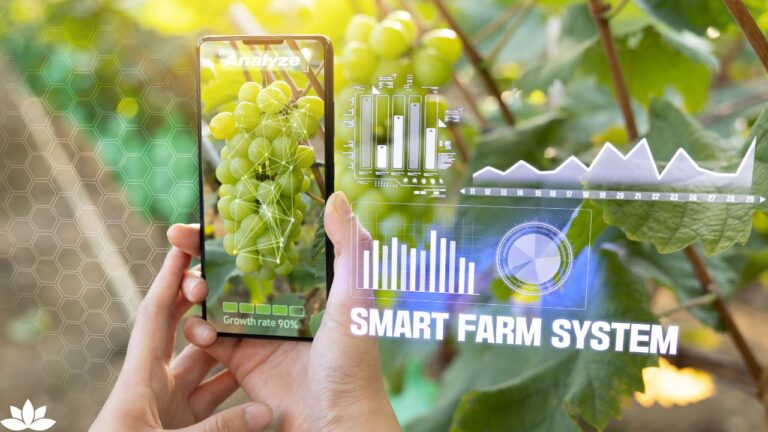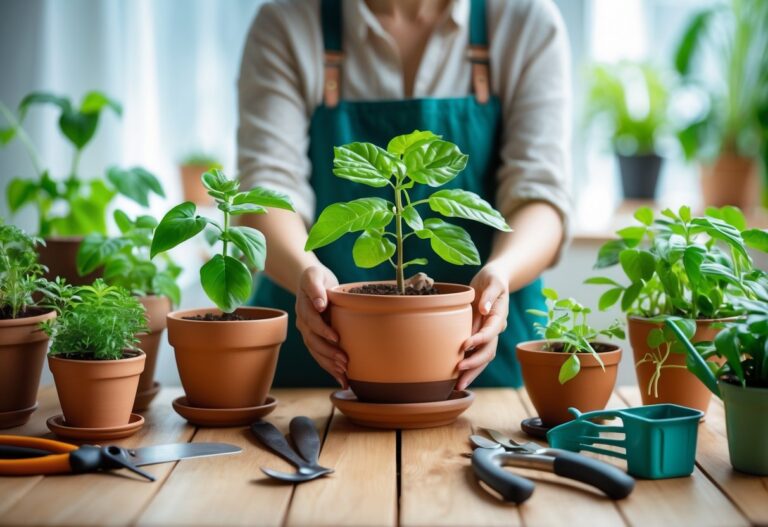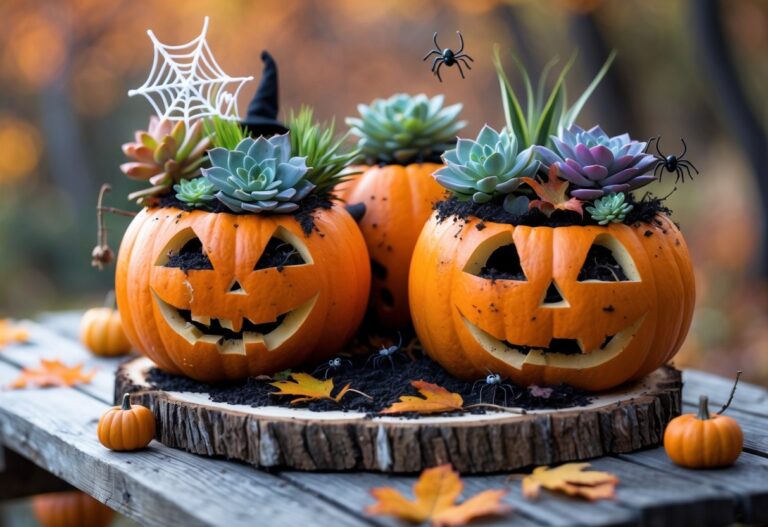If you’re the type who forgets to water your plants, self-watering planters might just save your greenery. They deliver water straight to the roots, so your plants stay hydrated without you needing to fuss over them every day.
This setup helps avoid both underwatering and drowning your plants. It’s honestly a relief if you have a busy schedule or just tend to forget.
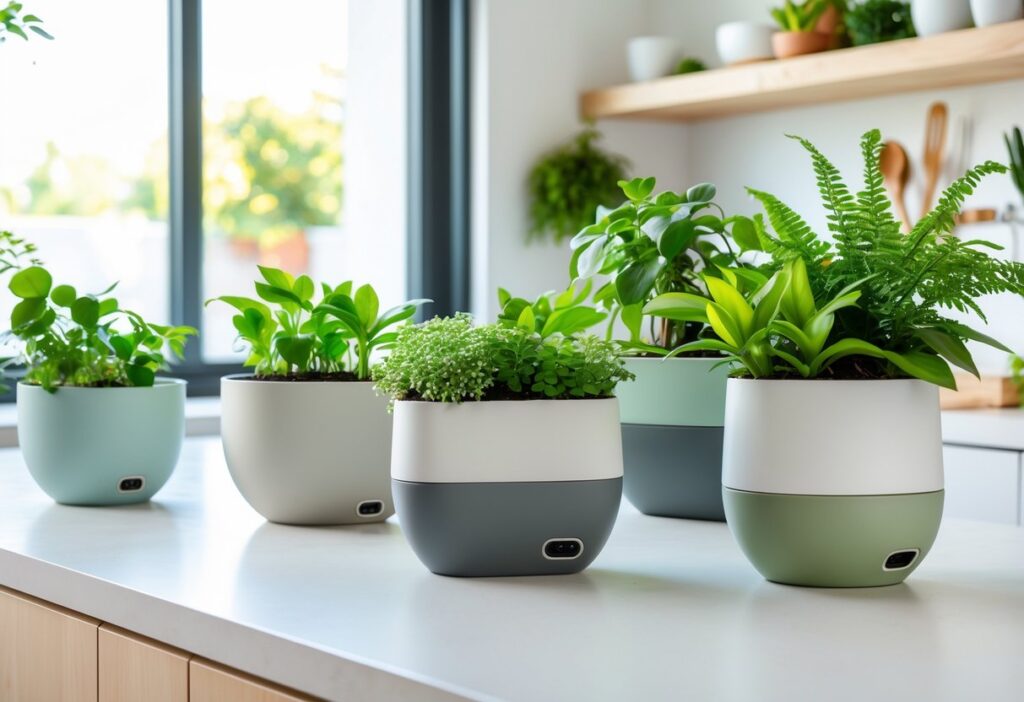
Most self-watering planters have built-in reservoirs that hold water for days—or sometimes weeks. That means less stress about your plants when you’re away or just distracted.
Whether you’re growing herbs in your kitchen or flowers outside, these planters can really cut down on the effort. Your plants get what they need, and you get some peace of mind.
Top Self-Watering Planters for Forgetful Gardeners
Let’s be honest, you want planters that keep your plants happy without you having to remember them every morning. There are options for pretty much every need—from versatile basics to compact containers for small spaces and tough, weather-resistant ones for outdoors.
Best Overall Self-Watering Planters
These are the all-rounders: planters that make life easier and moisture more consistent. Look for ones with a big water reservoir, so you’re not constantly refilling.
Many have a little water level window, so you can just peek and know when it’s time to top up. Materials like ceramic or heavy-duty plastic add some sturdiness and help manage soil temperature.
Planters like the Etglcozy self-watering pot blend simplicity with style—they look good and work well for forgetful folks. Sometimes the plain designs are the most reliable.
Features to check:
- Water reservoir size
- Water level indicator
- Suitable soil types
- Easy cleaning
Top Picks for Small Spaces and Indoor Gardens
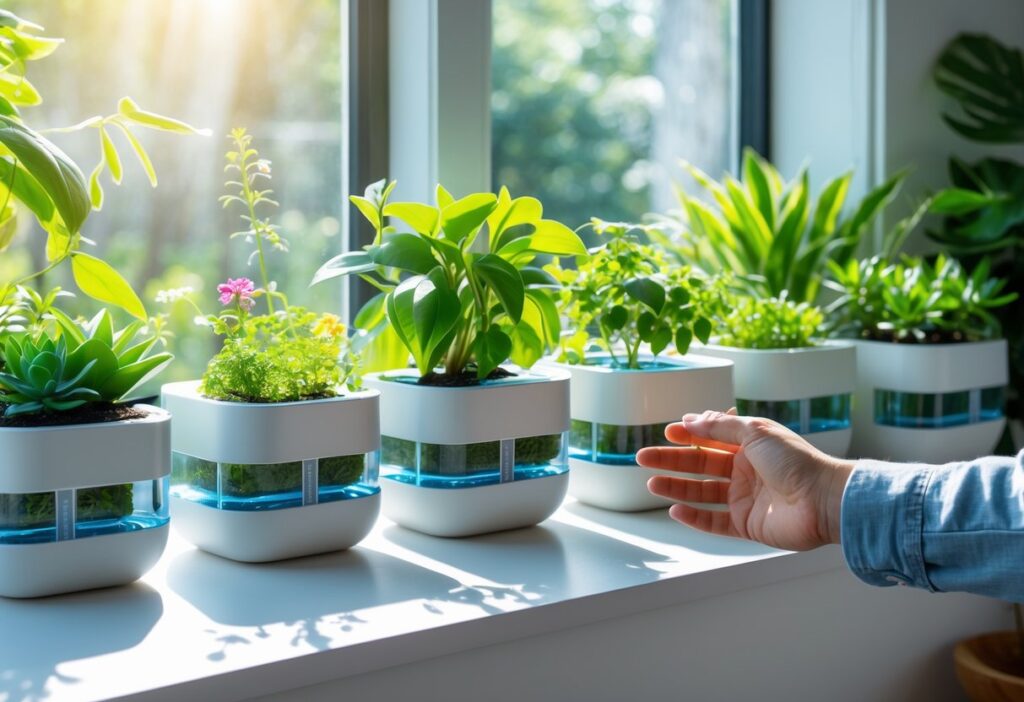
If you’re short on space, go for compact planters that fit on shelves or windowsills. Slim-profile self-watering pots are best for tight spots.
They keep houseplants like peace lilies and calatheas watered, without making a mess. Lightweight plastic is a smart choice—easy to move and clean, honestly.
Some even have self-wicking systems to keep things balanced. Just make sure they don’t overwater.
Ideal features:
- Compact size
- Water reservoir below base
- Sleek design to fit décor
- Overflow protection
Outdoor and Raised Garden Bed Options
Outdoor plants and raised beds need planters that can handle the weather. Go for UV-resistant plastic or treated wood for bigger plants or veggies.
Look for containers with solid drainage controls, especially if you get a lot of rain. Raised beds with built-in reservoirs are a game-changer when you travel or just forget.
Important points:
- Weatherproof material
- Large water capacity
- Good drainage system
- Easy to refill and maintain
Choosing the Right Self-Watering System
Picking a self-watering system that matches your lifestyle and your plants is honestly half the battle. Consider how it holds water, what it’s made of, and if it suits your plant collection.
Key Features to Look For
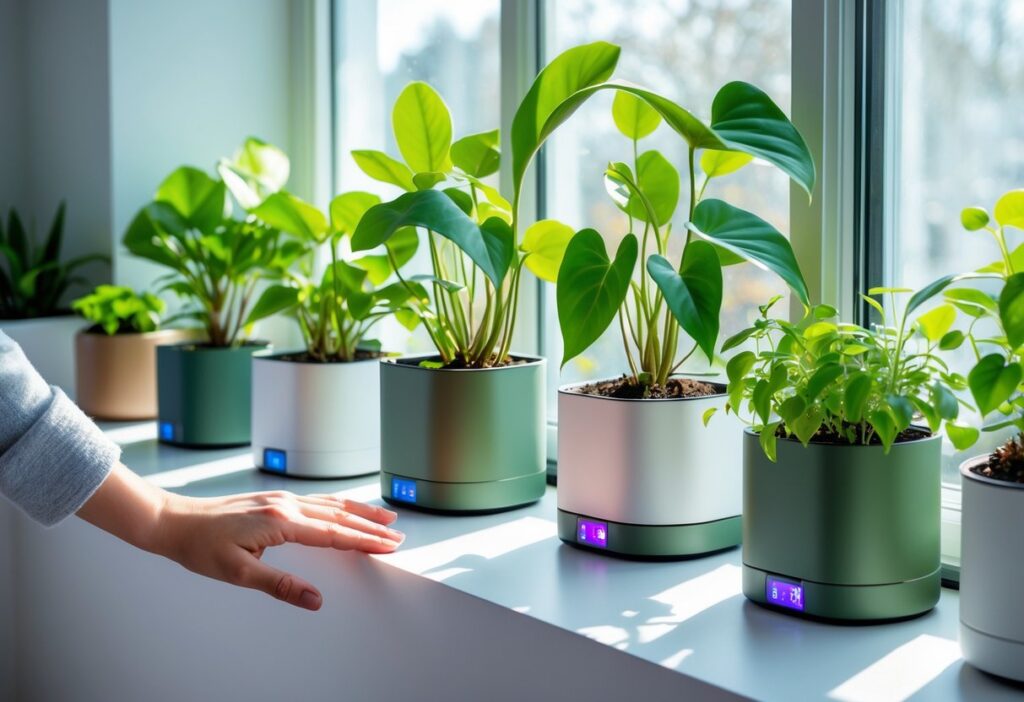
A solid self-watering planter needs a water reservoir that lasts several days. A clear water level indicator is super helpful—no more guessing games.
Drainage really matters. The planter should let extra water escape or be absorbed, so roots don’t sit in a swamp.
Some have adjustable drip systems if you want to fine-tune things. Aeration systems are a nice bonus, too—they help keep the soil fresh and prevent root rot.
And if you hate cleaning (who doesn’t?), look for planters with parts that are easy to take apart and rinse out.
Material Comparison: Plastic vs. Ceramic
Plastic planters are lightweight, budget-friendly, and don’t crack easily, which is great if you move them around a lot. But yeah, plastic can fade in sunlight and sometimes looks a bit basic.
Ceramic planters, on the other hand, just look nicer and let roots breathe more. They help with soil temperature but can be heavy and break if you’re not careful.
For durability and ease, plastic is the way to go. If you want something that looks great and keeps things cool, ceramic might win you over.
In the end, self-watering planters are a real lifesaver for anyone who loves plants but isn’t always on top of watering. They take the guesswork out of plant care, letting you relax a bit while your plants stay happy. Give one a try—your leafy friends will thank you, and honestly, so will your peace of mind.
Matching Planter Types to Plant Needs
Plants aren’t all the same when it comes to water. Succulents, for example, are pretty chill about drying out and really do best in planters that drain fast.
If you’re growing big veggies or have houseplants that get thirsty fast, it’s probably smarter to grab a self-watering pot. Look for one with a bigger water reservoir—less hassle refilling all the time.
Small herbs or plants squeezed into tight spots? A compact window planter with a basic watering setup just makes sense.
Hanging planters are a different story. You’ll want something lightweight and, honestly, make sure the self-watering feature is secure so you don’t end up with water all over your floor.
At the end of the day, matching your planter to your plant’s thirst level—and where it lives—makes everything smoother. It’s a bit of trial and error, but when you get it right, your plants (and you) are a lot happier.

